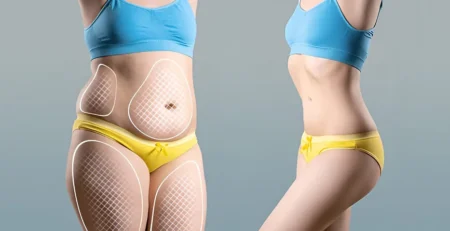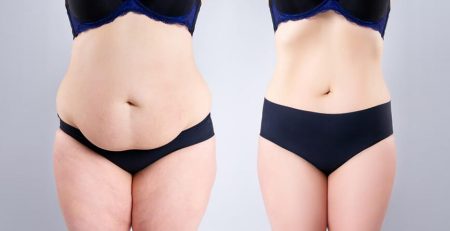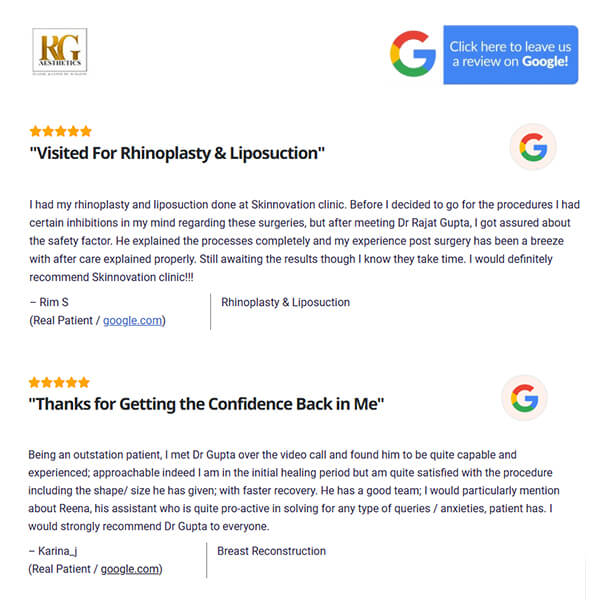What is Diastasis Recti – How Can a Tummy Tuck Help?
Have you ever noticed a bulging belly that just won’t go away no matter how many crunches, planks, or diets you try? It’s not always about stubborn fat—it might be a condition called diastasis recti. While it’s common after pregnancy or significant weight fluctuations, this abdominal separation isn’t just cosmetic—it can affect posture core strength, and even cause discomfort. Fortunately, tummy tuck surgery in Delhi, offers an effective solution to address both the appearance and functional aspects of this condition.
Diastasis Recti: More Than Just a Bulging Belly
Diastasis recti occurs when the two parallel bands of abdominal muscles, called the rectus abdominis, separate due to excessive stretching. This separation creates a visible gap and weakens the core.
Understanding the root causes of diastasis recti is crucial because it helps in managing and treating the condition effectively. Here are the most common reasons:
- Pregnancy: During pregnancy, the body releases hormones that loosen the connective tissue in the abdomen to make space for the growing baby. As the uterus expands, it pushes against the abdominal wall, stretching the muscles. While this is natural, in some cases, the muscles do not return to their original position after childbirth, leaving a visible gap.
- Rapid Weight Gain or Loss: Gaining weight quickly, especially around the belly area, can put tremendous pressure on the abdominal muscles. Similarly, losing weight too rapidly may leave the skin and muscles loose, unable to retract properly. This repeated stress weakens the core and can lead to diastasis recti.
- Improper Exercise: Exercises like crunches, sit-ups, or heavy lifting done with poor form can make diastasis recti worse. When too much pressure is placed on the abdominal wall, it can cause or widen the muscle gap instead of strengthening the core.
- Genetics: Some people may naturally have weaker connective tissues, making them more prone to developing diastasis recti.
While mild cases might improve with core exercises, severe diastasis recti typically requires surgical intervention. This is where tummy tuck surgery comes into play.

Have questions or want to get started? We are ready to help you with a smile!
What is Tummy Tuck Surgery and How Does It Help Diastasis Recti?
When people hear about tummy tuck surgery, they often think of it as just a cosmetic procedure to get a flat stomach. But for those suffering from diastasis recti, it’s so much more than that. A tummy tuck surgery (also called abdominoplasty) is a powerful medical solution that not only improves the appearance of the abdomen but also repairs the underlying muscle damage caused by diastasis recti.
In simpler terms, tummy tuck surgery is like hitting the reset button on your abdominal area. It addresses the loose skin, stubborn fat, and most importantly, the gap between your abdominal muscles caused by diastasis recti. This surgery helps restore core strength, improve posture, and even reduce back pain that often comes with this condition.
How Does the Procedure Work?
The process of tummy tuck surgery is detailed but follows a step-by-step approach to ensure both aesthetic and functional improvements. Here’s how it works:
- Incision: The surgeon starts by making a horizontal incision across the lower abdomen, usually below the bikini line. This placement ensures that the scar remains hidden under clothing, swimwear, or underwear.
- Muscle Repair: Once the skin is lifted, the surgeon focuses on repairing the diastasis recti. The two separated muscles in the middle of your abdomen (rectus abdominis) are stitched back together. This step closes the gap and strengthens the core, which is the main cause of weakness and bulging.
- Excess Skin Removal: After the muscles are repaired, the loose, sagging skin is removed. This step is especially important for people who’ve gone through significant weight loss or multiple pregnancies, as stretched skin doesn’t usually snap back on its own.
- Fat Reduction: If there are stubborn fat pockets in the abdominal area, they are removed using liposuction. This helps sculpt and contour the stomach, ensuring smoother results.
- Skin Tightening: The remaining skin is carefully pulled tight over the repaired abdominal wall. This creates a flat, firm, and toned look. Finally, the incision is stitched closed, and a new opening for the belly button is created if needed.
When is Tummy Tuck Surgery Necessary for Diastasis Recti?
While mild cases of diastasis recti can sometimes improve with targeted core exercises and physical therapy, moderate to severe cases usually require surgical intervention.
You might need tummy tuck surgery if you experience:
- A persistent belly bulge even after postpartum recovery or weight loss.
- Constantly lower back pain and poor posture.
- Core weakness affecting daily activities.
- Visible muscle separation or a trench-like gap when performing core exercises.
- Your belly bulges even after exercise and dieting.
- You have loose, sagging skin that won’t tighten naturally.
In such cases, tummy tuck surgery isn’t just about aesthetics—it’s about improving overall quality of life. If these symptoms sound familiar, consulting a cosmetic surgeon in India who specializes in abdominoplasty is essential for a proper evaluation.
The Results of Tummy Tuck Surgery for Diastasis Recti
One of the most rewarding aspects of tummy tuck surgery is the incredible transformation it brings—not just to how the abdomen looks, but also to how the body feels and functions. For people suffering from diastasis recti, this procedure goes beyond aesthetics; it addresses both physical discomfort and core weakness, creating a positive impact on daily life.
After recovery from tummy tuck surgery, patients typically notice several key improvements:
- A Visibly Flatter and Firmer Abdomen: The most noticeable result of tummy tuck surgery is a smooth, flat stomach. By repairing the separated abdominal muscles caused by diastasis recti and removing excess skin, the midsection looks significantly more toned and firm. Clothes fit better, and the belly bulge that once seemed impossible to fix is finally gone.
- Improved Core Strength and Stability: Diastasis recti weakens the abdominal muscles, making even simple tasks like sitting up, bending over, or carrying groceries feel challenging. After tummy tuck surgery, the repaired muscles restore core strength, giving patients better balance and stability. Activities that once felt tiring become much easier and more comfortable.
- Reduced Back Pain and Better Posture: A weak core often leads to poor posture, which places extra stress on the lower back. Many patients with diastasis recti experience persistent lower back pain as a result. By tightening the abdominal muscles during tummy tuck surgery, the spine receives better support, and back pain often decreases or disappears entirely. Improved posture also adds to a more confident and upright stance.
- Greater Comfort During Physical Activities: With a stronger core and reduced discomfort, physical activities such as walking, jogging, or even stretching become far more enjoyable. Patients often find that they can return to exercises they previously avoided due to discomfort or weakness caused by diastasis recti. Whether it’s yoga, lifting weights, or playing with their children, movement becomes easier and more natural.
- A Significant Boost in Self-Confidence: Beyond the physical improvements, the emotional benefits of tummy tuck surgery are equally powerful. For many people, dealing with diastasis recti and the associated belly bulge can cause frustration and self-consciousness. After surgery, patients often feel more confident in their appearance, whether they’re wearing fitted clothes, swimsuits, or simply looking in the mirror.
Maintaining the Results of Tummy Tuck Surgery
While the results of tummy tuck surgery are long-lasting, they aren’t entirely maintenance-free. To ensure the benefits remain for years to come, it’s important to:
- Maintain a Stable Weight: Significant weight gain or loss can stretch the abdominal muscles and skin again, reversing some of the surgery’s effects.
- Stay Physically Active: Gentle exercises, including core-strengthening activities, can help keep the abdominal muscles strong and toned.
- Follow a Balanced Diet: Eating nutritious foods helps maintain a stable weight and supports overall health.
The Takeaway
The results of tummy tuck surgery for diastasis recti go far beyond just looking good in a mirror. It’s about feeling strong, confident, and pain-free. This surgery addresses the core issue—literally—and gives patients a chance to live without the daily struggles caused by weakened abdominal muscles and excess skin.
When performed by an experienced cosmetic surgeon in India, tummy tuck surgery offers life-changing results, empowering patients to move, feel, and look better than they have in years.
If you’ve been dealing with persistent belly bulge, weak core strength, or discomfort from diastasis recti, this surgery could be the life-changing solution you’ve been looking for.
Take the first step towards reclaiming your confidence and core strength with tummy tuck surgery. Dr. Rajat Gupta, a renowned board-certified plastic surgeon with over 15 years of experience, specializes in advanced tummy tuck techniques to deliver natural and lasting results. Schedule your consultation today and begin your journey towards a healthier, stronger you.
Dr. Rajat Gupta
MBBS, MS, DNB(Gen. Surg.),
DNB (Plastic Surgery)
Dr. Rajat Gupta is a board certified plastic surgeon in India with 15 years of experience to back his expertise in the domain of aesthetic surgeries.
Having completed his training from Maulana Azad Medical College and equipped with a thorough understanding of aesthetic needs of people, Dr. Gupta strives to offer the best remedies and cosmetic procedures outfitted with the latest technology to the aspirants in India and across the globe. To book an appointment, call: +91-9251711711 or email: contact@drrajatgupta.com













